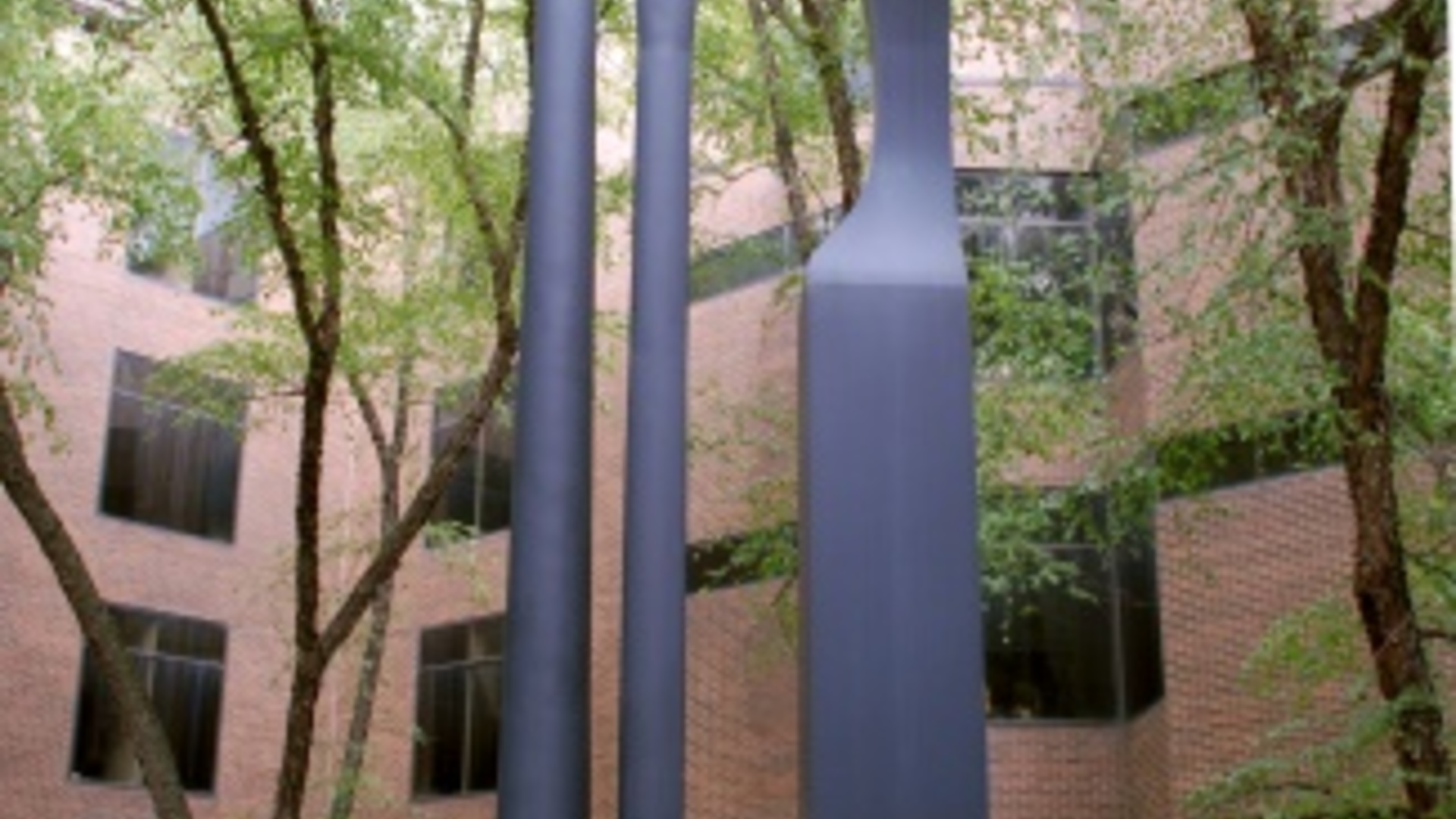Voyage
Voyage was the first sculpture purchased with funds provided by the Art in State Buildings Program, initiated in 1978. With public works such as Voyage, Louise Nevelson creates a visual dialogue using existing scenery and groups of vertical elements, evocative of trees or plant like forms. Nevelson preferred to see her large-scale outdoor sculpture, which she undertook in the last fifteen years of her life, as environmental architecture. Voyage fits this description as it commands attention within the closed-off courtyard of the Lindquist Center. Yet, it does not overwhelm the entire space. The work invites dialogue with the viewer, offering a variety of shapes, forming spatial relationships with both the spectator and the architectural environment.
Born in Kiev, Ukraine, Nevelson studied at the Art Students League in New York City from 1928-1930 and subsequently with Hans Hofmann in Munich in 1931. She began her artistic career in the 1930s as a painter, drawing from the seminal artistic movements of the century: cubism, expressionism, and surrealism. Like many other great American modernists, she was a participant in the Federal Arts Project during the Depression, but later turned toward abstraction. After World War II, she developed her best known style: the practice of joining cast-off wooden objects in elaborate, boxed constructions, painted a flat, unifying color, most commonly black. Voyage recalls this method in bronze.

